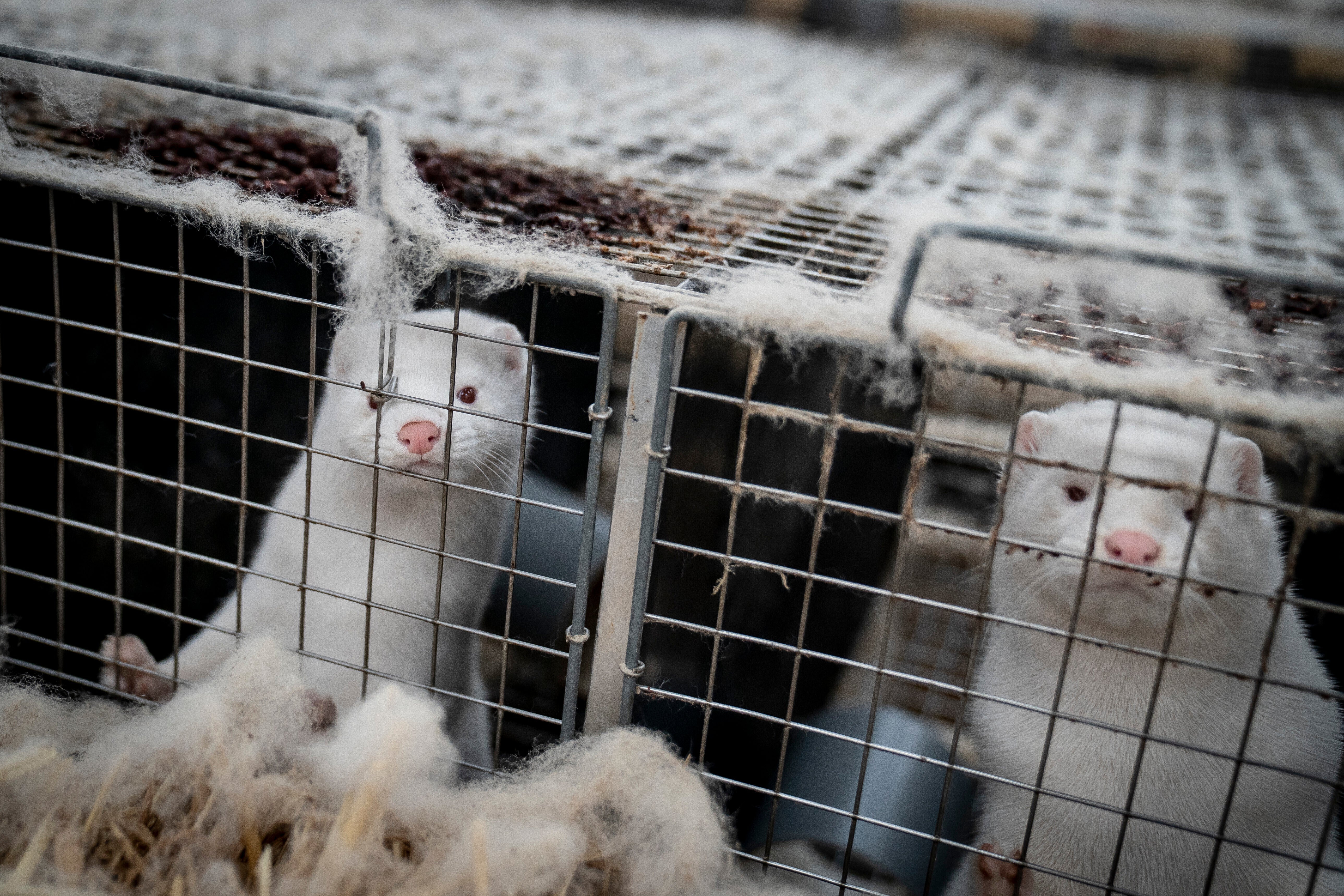Denmark to allow 'significantly reduced' mink production
Denmark’s government says a temporary ban on mink breeding will expire Jan. 1, allowing mink production to resume in the country but at a ”significantly reduced” level than before the coronavirus pandemic

Your support helps us to tell the story
From reproductive rights to climate change to Big Tech, The Independent is on the ground when the story is developing. Whether it's investigating the financials of Elon Musk's pro-Trump PAC or producing our latest documentary, 'The A Word', which shines a light on the American women fighting for reproductive rights, we know how important it is to parse out the facts from the messaging.
At such a critical moment in US history, we need reporters on the ground. Your donation allows us to keep sending journalists to speak to both sides of the story.
The Independent is trusted by Americans across the entire political spectrum. And unlike many other quality news outlets, we choose not to lock Americans out of our reporting and analysis with paywalls. We believe quality journalism should be available to everyone, paid for by those who can afford it.
Your support makes all the difference.Denmark's government said Friday that a temporary ban on mink breeding will expire Jan. 1, allowing mink production to resume in the country but at a ”significantly reduced" level than before the coronavirus pandemic.
The Danish government nearly two years ago ordered a cull of millions of minks to minimize the risk of the small mammals retransmitting the virus. The Scandinavian country banned mink farming in November 2020 to contain a mutated version of the coronavirus that could spread to people.
The Environment and Food Ministry said health officials now think “there is a limited risk to public health by resuming significantly reduced mink production and by introducing infection prevention measures."
The government said the decision to lift the temporary ban was based on an assessment by the Statens Serum Institut, a government agency that maps the spread of diseases in Denmark.
Food, Agriculture and Fisheries Minister Rasmus Prehn and institute officials plan to meet later Friday with representatives of the Danish mink industry to “review the infection prevention measures for the industry.”
The government said veterinary and health authorities have drawn up a model with requirements for handling COVID-19 in mink herds that breeders must “implement and comply with in order to be able to keep mink again after the turn of the year.”
“There are absolutely no good reasons to reopen large mink farms with millions of animals crammed in small wire cages until they are killed for their fur,” said Britta Riis, head of Animal Protection Denmark. “It is bad for the animals, the environment and the climate.”
“Keeping mink in the existing cages is not acceptable,” she said and added that several European countries have either banned or are phasing out mink farming. On Thursday, Latvia became the latest country to ban mink farming from 2028.
Denmark was one of the world’s main mink fur exporters, producing an estimated 17 million furs per year. Kopenhagen Fur, a cooperative of 1,500 Danish breeders, accounts for 40% of global mink production. Most of its exports went to China and Hong Kong.